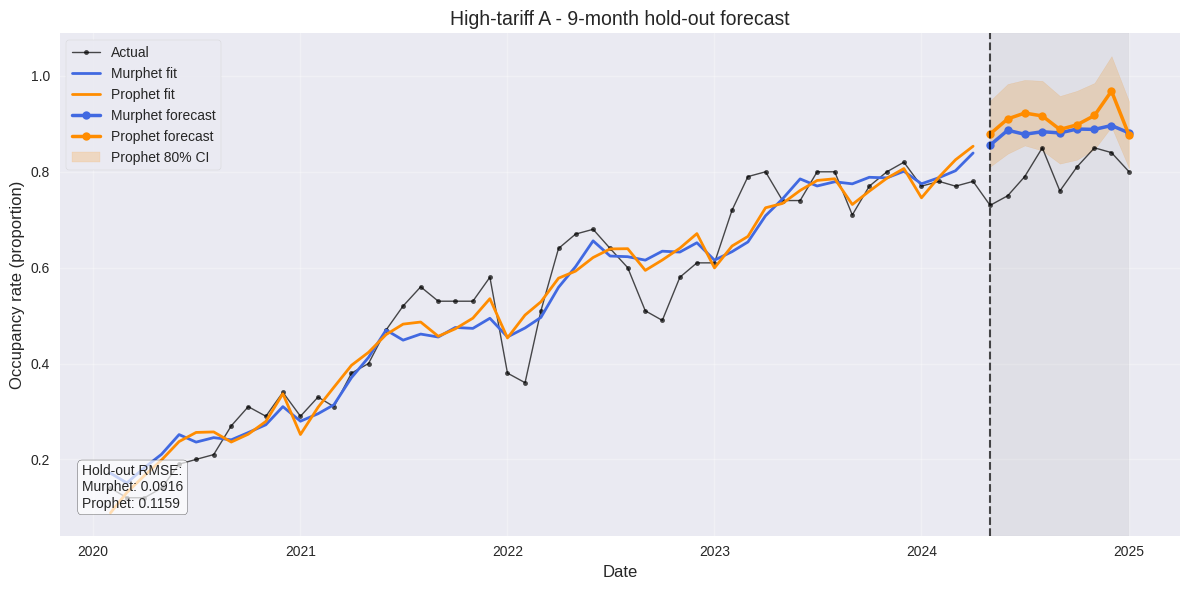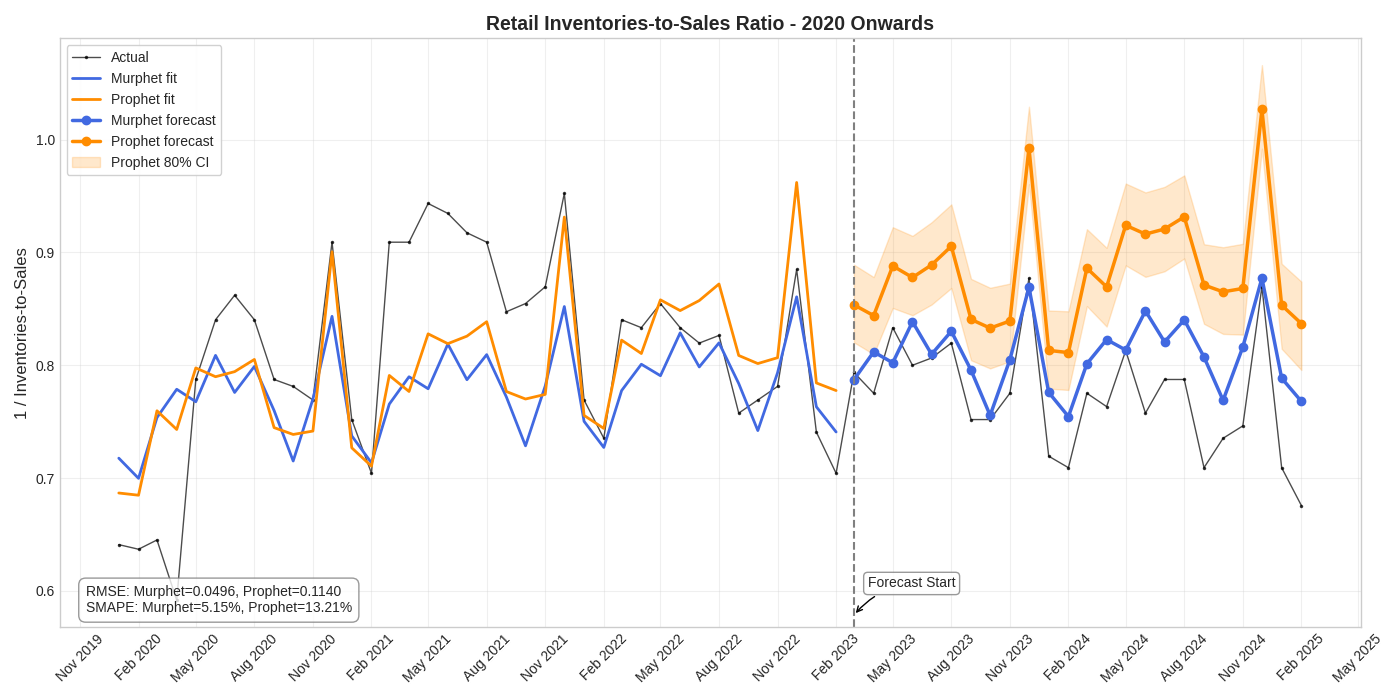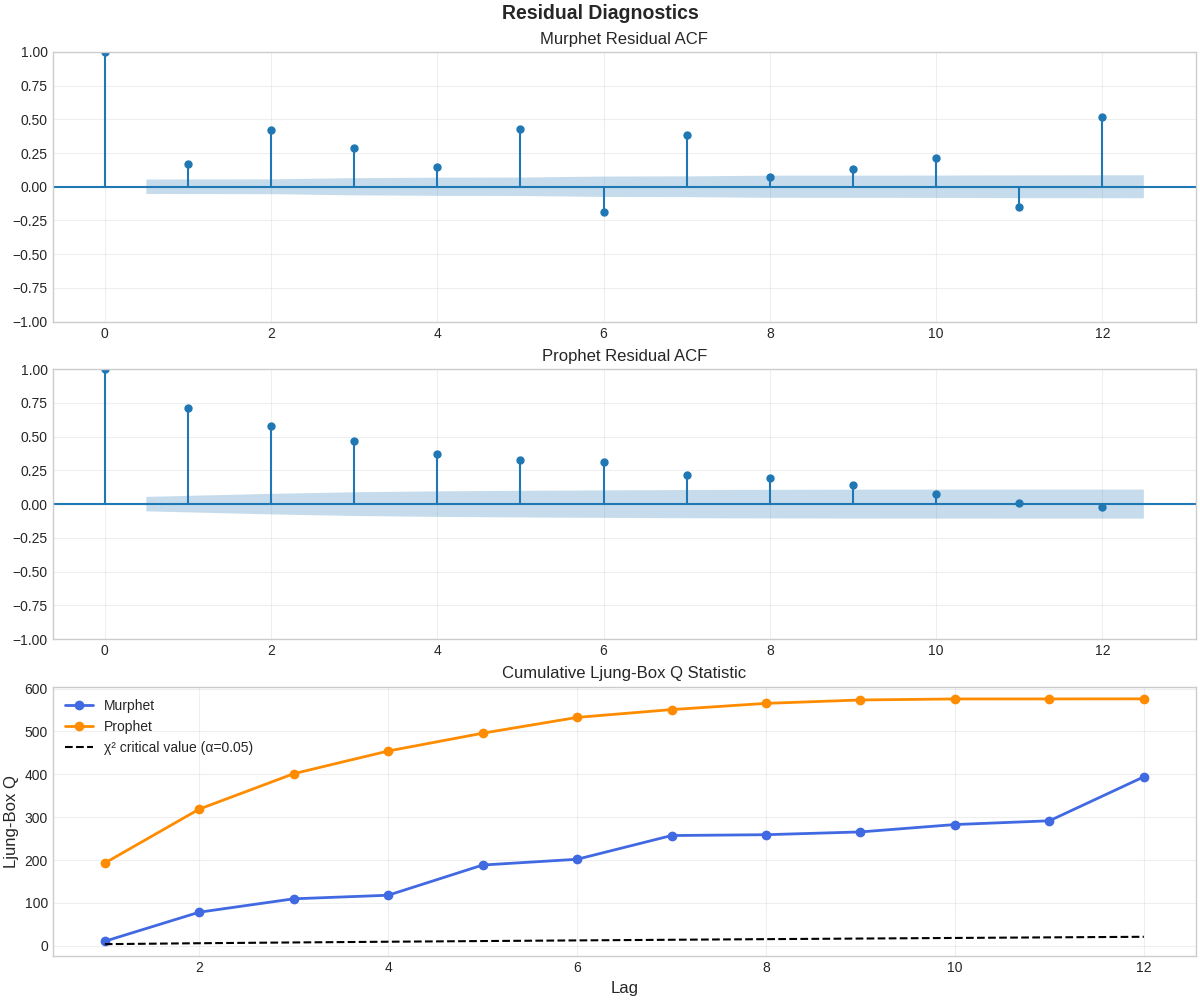Performance Benchmarks
In rigorous Optuna-tuned cross-validation studies, Murphet consistently outperforms Prophet for bounded metrics.
Hotel Occupancy (High Tariff A)

9-month hold-out test:
Murphet RMSE: 0.091 | Prophet RMSE: 0.158
42% error reduction
Retail Inventories-to-Sales Ratio

12-month hold-out test:
Murphet RMSE: 0.050 | Prophet RMSE: 0.114
56% error reduction
Residual Analysis

Murphet's residuals show significantly lower autocorrelation and reduced Ljung-Box Q statistics, indicating better capture of underlying patterns and more reliable predictions.
Migrating from Prophet to Murphet
If you're already using Prophet for forecasting rates or proportions, transitioning to Murphet is straightforward:
# --- Prophet code ---
from prophet import Prophet
m = Prophet(
changepoint_prior_scale=0.05,
seasonality_prior_scale=10.0,
seasonality_mode='additive',
mcmc_samples=0
)
m.fit(df)
future = m.make_future_dataframe(periods=12)
forecast = m.predict(future)
# --- Equivalent Murphet code ---
from murphet import fit_churn_model
model = fit_churn_model(
t=df['t'], # Numeric index
y=df['y'], # Target values (between 0-1)
likelihood="beta", # For bounded metrics
delta_scale=0.05, # Same as changepoint_prior_scale
season_scale=1.0, # Similar to seasonality_prior_scale/10
periods=12.0, # Yearly seasonality
num_harmonics=3, # Complexity of seasonal pattern
inference="map" # Fast point estimates (like mcmc_samples=0)
)
future_t = np.arange(df['t'].iloc[-1] + 1, df['t'].iloc[-1] + 13)
forecast = model.predict(future_t)